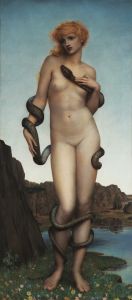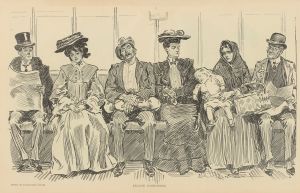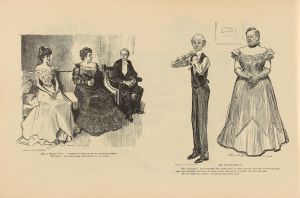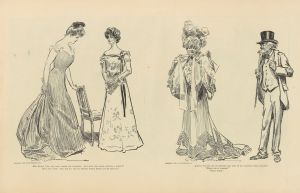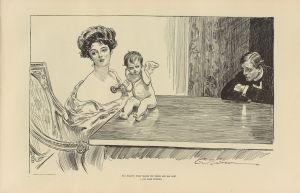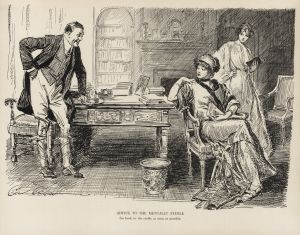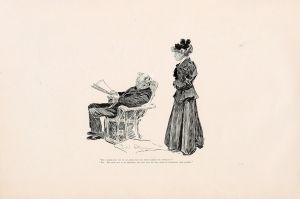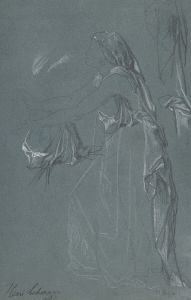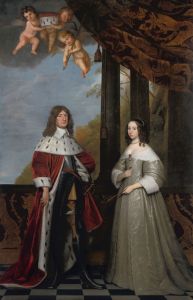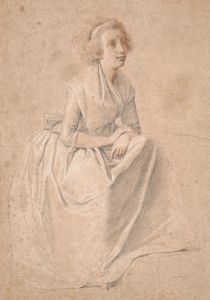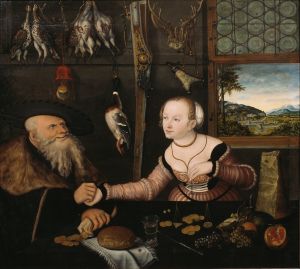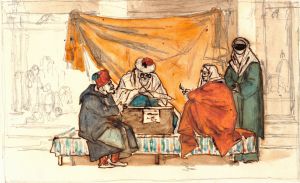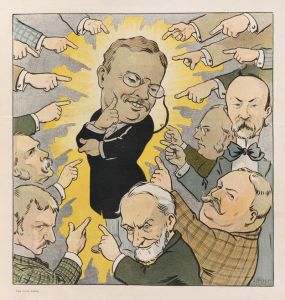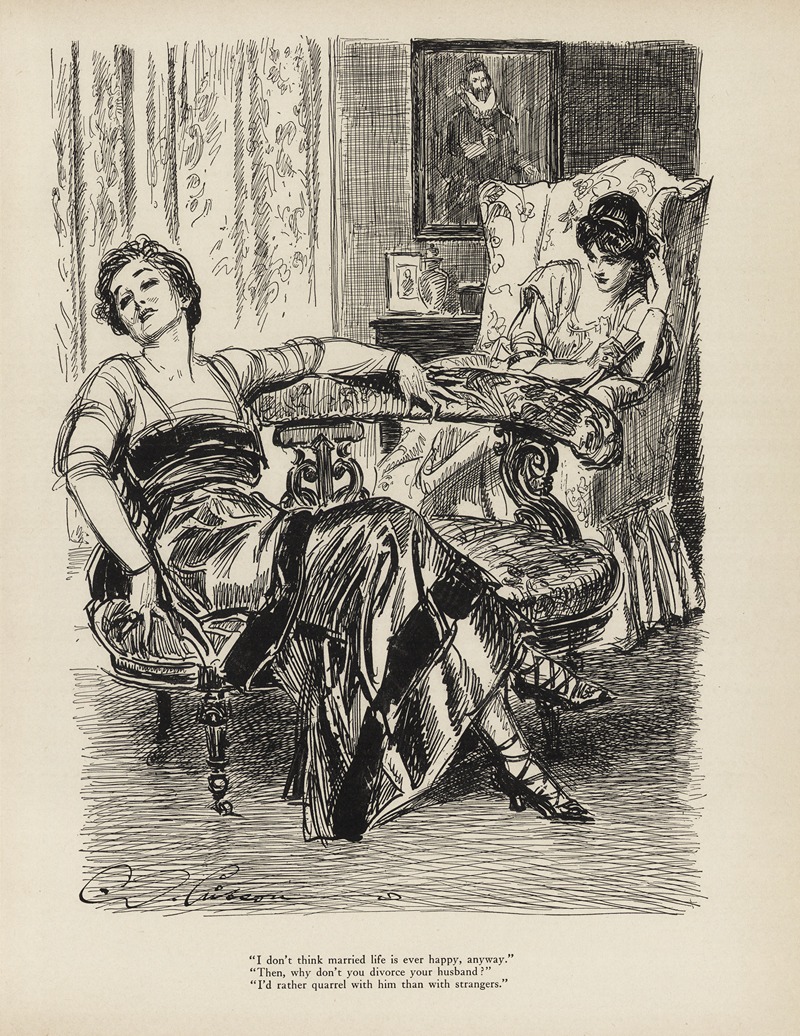
‘I don’t think married life is ever happy, anyway’
A hand-painted replica of Charles Dana Gibson’s masterpiece ‘I don’t think married life is ever happy, anyway’, meticulously crafted by professional artists to capture the true essence of the original. Each piece is created with museum-quality canvas and rare mineral pigments, carefully painted by experienced artists with delicate brushstrokes and rich, layered colors to perfectly recreate the texture of the original artwork. Unlike machine-printed reproductions, this hand-painted version brings the painting to life, infused with the artist’s emotions and skill in every stroke. Whether for personal collection or home decoration, it instantly elevates the artistic atmosphere of any space.
Charles Dana Gibson was an influential American illustrator, best known for creating the iconic "Gibson Girl," a representation of the idealized American woman at the turn of the 20th century. His work often captured the social dynamics and cultural norms of his time, using humor and satire to comment on societal issues. One of his notable works is the illustration titled "I don’t think married life is ever happy, anyway."
This illustration is part of Gibson's broader exploration of gender roles and relationships during the late 19th and early 20th centuries. Gibson's work often depicted the complexities and contradictions of romantic and marital relationships, reflecting the changing attitudes towards marriage and gender roles during this period. The title itself, "I don’t think married life is ever happy, anyway," suggests a cynical or humorous take on the institution of marriage, which was a common theme in Gibson's illustrations.
Gibson's illustrations were widely published in popular magazines of the time, such as Life, Harper's Weekly, and Scribner's, reaching a broad audience and influencing public perceptions of gender and relationships. His work was characterized by its detailed pen-and-ink style, which captured the fashion, manners, and social interactions of the era with precision and wit.
The "Gibson Girl" became a cultural phenomenon, representing a new standard of femininity that was independent, confident, and socially active. This figure often appeared in Gibson's illustrations, including those that dealt with themes of marriage and relationships. The "Gibson Girl" was both an ideal and a commentary on the evolving role of women in society, as women were beginning to assert more independence and seek opportunities beyond traditional domestic roles.
In "I don’t think married life is ever happy, anyway," Gibson likely used his signature style to depict a scene that humorously critiques or questions the romanticized view of marriage. While the specific details of this illustration are not widely documented, it can be inferred that it aligns with Gibson's typical approach of using satire to address social issues.
Gibson's work, including this illustration, played a significant role in shaping the cultural discourse around marriage and gender roles during his time. His ability to capture the nuances of social interactions and his keen eye for detail made his illustrations both entertaining and thought-provoking.
Overall, Charles Dana Gibson's "I don’t think married life is ever happy, anyway" is an example of his talent for using art to reflect and critique the societal norms of his era. His legacy as an illustrator continues to be recognized for its impact on American culture and its contribution to the visual arts.





